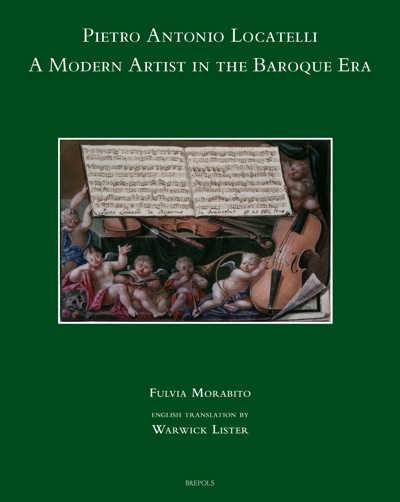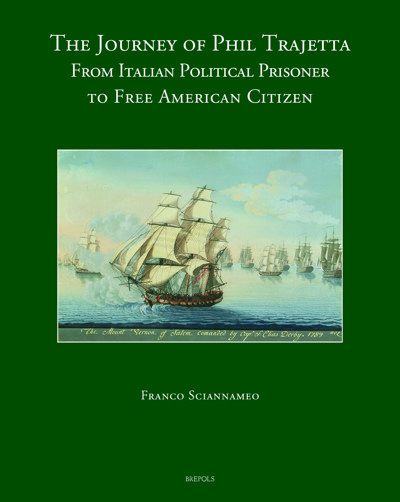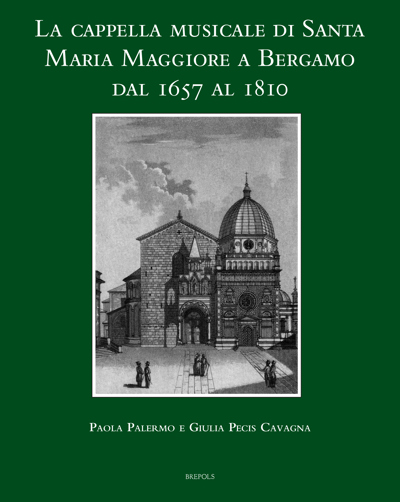
- Pages: xx + 480 p.
- Size:210 x 270 mm
- Illustrations:71 b/w, 17 tables b/w., 49 musical examples
- Language(s):English, Italian
- Publication Year:2025
- € 155,00 EXCL. VAT RETAIL PRICE
- ISBN: 978-2-503-62185-2
- Hardback
- Forthcoming (Dec/25)
*How to pre-order?
This volume offers a comprehensive examination of sacred music in Italy from the fifteenth to the nineteenth century.
Thomas Neal is a musicologist, teacher, and conductor. He graduated in musicology from Clare College, Cambridge, where he was the John Stewart of Rannoch Scholar in Sacred Music. Since 2018, he has served as Director of Music at New College School, Oxford. Thomas’s research centres on liturgical music and culture in sixteenth-century Rome, with a particular focus on Giovanni Pierluigi da Palestrina. Thomas is also active as a church musician for the traditional Latin liturgy.
Galliano Ciliberti is a professor of History of Music at the “Nino Rota” Conservatory in Monopoli. He has received several contracts as research director funded by the National Research Council, he was a research fellow at the Department of Musicological and Paleographic-Philological Sciences of the University of Pavia, Cremona branch and has obtained several teaching contracts at the University of Perugia, the Université Paris IV (Sorbonne) and the University of Bari.
This volume offers a comprehensive examination of sacred music in Italy from the fifteenth to the nineteenth century, bringing together contributions from nineteen scholars at the forefront of current musicological research. Through a diverse array of topics and methodologies, the collection sheds new light on the multifaceted roles that sacred music played within Italian religious, cultural, and institutional life over four centuries. The chapters engage with the production, transmission, and performance of sacred music across a variety of regional and ecclesiastical contexts. Topics include manuscript production and the devotional practices of confraternities, as well as the commissioning and composition of sacred works tailored to local liturgical needs and patronage structures. The volume also addresses broader issues such as the pedagogical uses of sacred music, the development of organology in ecclesiastical settings, evolving performance practices, and the aesthetic and theological discourses that informed the liturgical movement. By foregrounding the interaction between sacred music and the wider cultural landscape of early modern and modern Italy, this collection not only deepens our understanding of specific repertoires and practices but also contributes to larger conversations about the place of music in religious experience and institutional, cultural, and religious identity. Richly interdisciplinary in approach, the volume is essential reading for scholars of music history, religious studies, and early modern Italian culture.
Galliano Ciliberti – Thomas Neal
Preface
Researching Sacred Music in Early Modern Italy: Sources, Contexts, Methods
Jeffrey Kurtzman
Research in Sixteenth- and Seventeenth-Century Italian Sacred Music: Progress, Questions, Challenges, and Thoughts for the Future
«O Roma nobilis»: Sacred Music in Early Modern Rome
Noel O’Regan
Manuscript or Print? Choices Facing Institutions and Composers in Early Modern Rome
Thomas Neal
Palestrina and the Arciconfraternita del Santo Rosario: New Documents for the Chronology and Publication of the Litaniæ Deipare Virginis (1582)
Galliano Ciliberti
Il varco delle stelle: La musica e il sacro nella Roma Barocca
Sounding Music, Symbolic Forms: The Patronage of Sacred Music in Florence, Verona, and Rome
Adam Knight Gilbert
Henricus Isaac’s Sacred Music in Florence and the Case for a ‘Medici’ Mass
Paolo Alberto Rismondo
Il concilio di Trento, Agostino Valier, la scuola degli accoliti, e l’ambiente musicale veronese tra Cinque e Seicento
Jorge Morales
Early Modern Italian Cardinals and Music: Has the Last Been Said for an Anthropological and Semiotic Approach towards Musical Patronage?
Liturgical and Devotional Music in Baroque Sicily
Nicolò Maccavino
Le Missae defunctorum (Venezia 1645 e 1650) di Mario Capuana «Maestro di Capella dell’Illustrissimo Senato e Duomo della Città di Noto
Maria Rosa De Luca – Daniele Cannavò
Musica e pratiche devozionali nel monastero benedettino di San Nicolò l’Arena tra Sette-Ottocento: osservanza e persistenza del culto dell’Infanzia di Gesù Bambino
Singing the Lord’s Song in the Piedmont: Case Studies from Vercelli and Turin
Denis Silano
Composizioni vocali con cantus firmus al basso nella cattedrale di Vercelli all’inizio del Seicento: elementi indiziali della pratica del cantare super librum?
Stefano Baldi
Giovanni Battista Trabattone e il ciclo di Inni della cattedrale di Torino
Paolo Cavallo
Un «primo vespro» di Giuseppe Re per la solennità patronale di sant’Eusebio del 1776 nella cattedrale di Vercelli
Composing, Teaching, and Collecting Italian Sacred Music in the Eighteenth Century
Elia Pivetta
«An Excellent Church Composer»: Notes on the Life and Work of Girolamo Pera (c.1691–1771)
Peter van Tour
«Come in uno Specchio»: Counterpoint in Eighteenth-Century Italy and Its Instruction through Models
Biancamaria Brumana
I mottetti attribuiti a Pergolesi nella collezione van den Boom di Bruxelles e il viaggio a Roma del mecenate fiammingo nel 1725
Sacred Music in the Alta Italia: Sources, Patronage, and Instruments in Ottocento Milan and Modena
Angela Fiore
Manuscripts of Sacred Music in the Collection of the Marquis Giuseppe Campori
Matteo Marni
La committenza vicereale e l’archivio musicale della Cappella di Corte di Milano negli anni di Eugenio di Beauharnais
Federico Terzi
Organ Building, Organ Music and Liturgy: The Debate in the Gazzetta musicale di Milano (1842–1902)
Abstracts and Biographies
Index of Names




